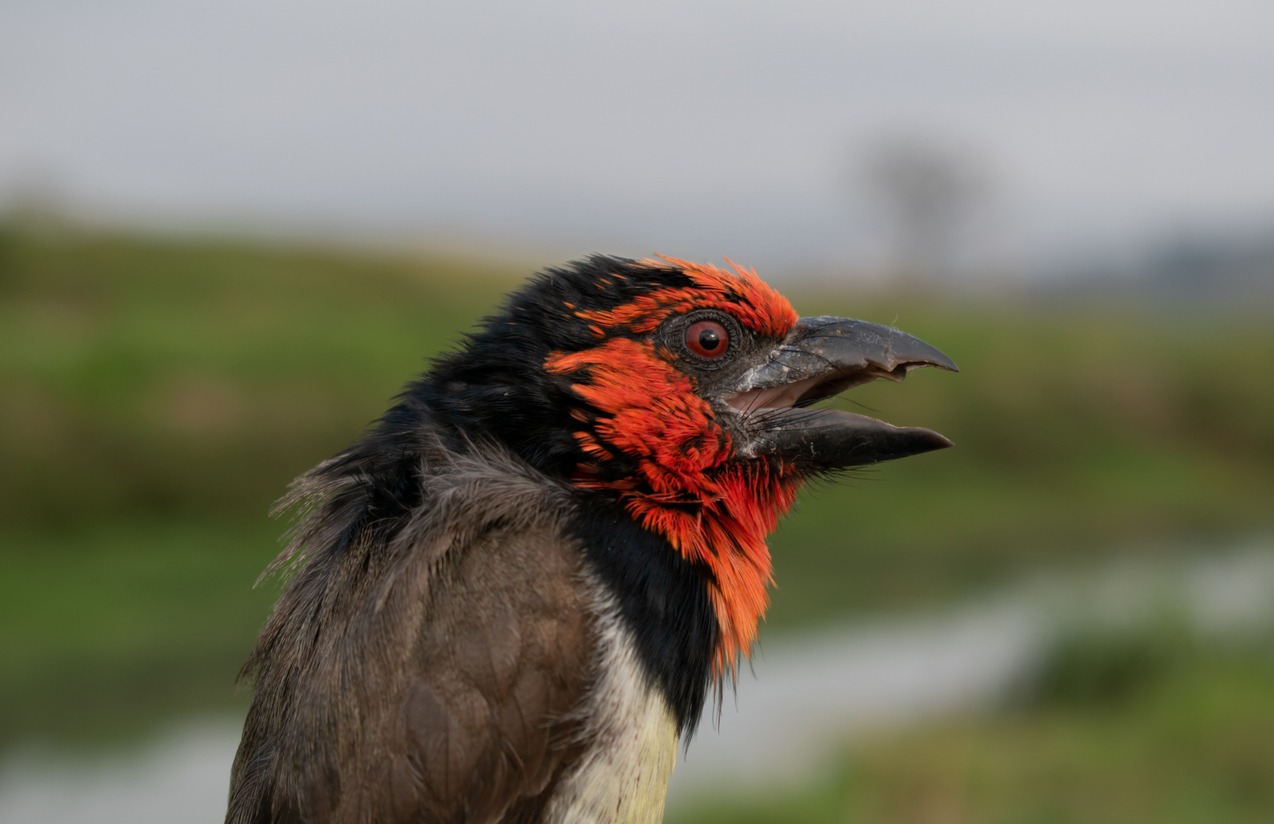The Black-collared Barbet, also known as Lybius torquatus, is one of the most common barbets that can be found in Africa. It is a bird species that is categorized under the family Lybiidae. Commonly known as African barbets, this family of bird species is indigenous to the African continent. The closest relatives of Black-collared Barbet are the Red-and-Yellow Barbet and Double-toothed Barbet.
The Black-collared Barbet was first described in 1816 by French zoologist Charles Henri Frédéric Dumont de Sainte-Croix.
This beautiful bird’s population is scattered across the African continent. Since its population occurs widely in Africa, and their number appears to be on a steady rise, the International Union for Conservation of Nature (IUCN) Red List listed this bird species as Least Concern.
Its seven levels of scientific classification are as follows:
Kingdom: Animalia
Phylum: Chordata
Class: Aves
Order: Piciformes
Family: Lybiidae
Genus: Lybius
Species: L. torquatus
The physical characteristics of a Black-collared Barbet
This bird species has striking colors, making it an unmistakable sight. It is a plump-looking bird with a head that is relatively larger than its body size. It has a heavy bill fringed with bristles, a common attribute of African barbets. Its distinctive black collar is the reason behind its name. It possesses a red face, black underparts, and a pale bill. This red color starts from the eyes, around its beak, and down to its neck. Sometimes, some Black-collared Barbets have a white or yellow face.
An adult Black-collared Barbet can grow between 20 to 25 cm in length. This bird species is usually more colorful and larger than other barbet species. Both male and female Black-collared Barbets share the same physical characteristics.
The distribution and habitat of Black-collared Barbets
This bird species is endemic in sub-Saharan Africa, particularly in Botswana, Burundi, Angola, the Democratic Republic of the Congo, Malawi, Kenya, Lesotho, Mozambique, Namibia, South Africa, Rwanda, Swaziland, Zimbabwe, Tanzania, Zambia, and Uganda.
The Black-collared Barbets frequent habitats such as broad-leaved woodland savannahs, miombos, grassland savannahs, riverine forests, open and closed woodlands, suburban gardens, and cultivated areas where insects and glean fruits thrive.
The behavior of Black-collared Barbets
These birds are famed for their fascinating vocalizations. The Black-collared Barbets are one of the many duetting barbet species that regularly exercise duet callings and other kinds of vocalizations. Researchers suggest that these birds do not sing solitary songs. A pair of Black-collared Barbets sing a unique, powerful duet that sounds like “too-puddly too-puddly too-puddly” or “too doodle too doodle” while flicking their wings. A dance accompanies this loud song—the two Black-collared Barbets will face each other, calling and bowing ceremoniously to each other, before releasing a wide range of sounds, including snarls, warning calls, and loud buzzes. A bird’s snarling is said to be a sound that invites another Black-collared Barbet in a duet.
This song is usually an antiphonal duet, meaning that one bird will start singing the first note, while the other bird will sing the second note. Their voices typically sound the same, making it sometimes hard to recognize that the sound comes from two different birds.
Aside from their beautiful vocalizations and displays, Black-collared Barbets like engaging in various greeting ceremonies, territorial displays, and courtship displays.
The breeding habits of Black-collared Barbets
During the breeding season, both sexes will excavate the nest, which is usually a hole at a side of a dead branch or stump, or trunks of softwood trees. The couple uses the nest site for several breeding seasons—sometimes using it for ten years. The egg-laying season takes place between September and February in South Africa, and between August and April in Zimbabwe.
A female Black-collared Barbet lays 2-5 eggs. The couple will share responsibility in incubating the eggs for 18 days.
After the eggs have hatched, the chicks are required to stay in the nest for 33-36 days. The couple will be responsible for feeding their chicks in the nest until the day arrives when they are ready to live independently.
The diet of Black-collared Barbets
They are solitary foragers who feed on a wide range of fruits and vegetables such as wild figs, water berries, sourberries, white milkwood, and jackal berries. Black-collared Barbets also feed on seeds, insects, lizards, small frogs, geckos, centipedes, nectar, and green pods.
BOTSWANA BIRDS | SOUTH AFRICA BIRDS
NAMIBIA BIRDS | ZAMBIA BIRDS | ZIMBABWE BIRDS

